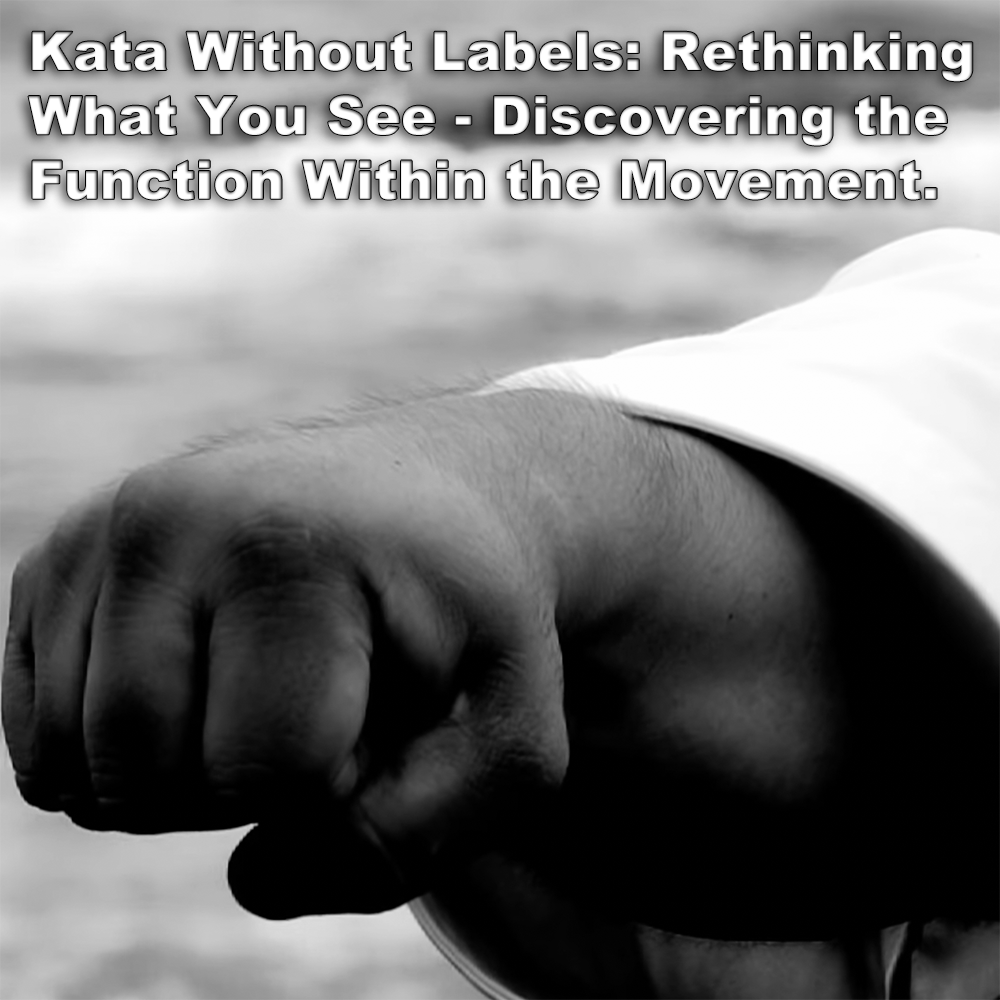
Kata Without Labels: Rethinking What You See – Discovering the Function Within the Movement.
Posted by ADAM CARTER on AUG 05, 2025

Kata Without Labels: Rethinking What You See – Discovering the Function Within the Movement.
(Approx 2 minute 40 second read)
Take a single technique from any kata – a reverse punch (gyaku-zuki). Most people think of it as just a punch. But what if it’s more? What if that basic movement – seen in countless kata – is a tool that goes far beyond striking? And of course, gyaku-zuki doesn’t have to start from the hip.
The rear-hand punch is basic, familiar, and widely used. You’ll see it in karate, kung fu, boxing, MMA – anywhere someone stands in front of an opponent and throws a rear-hand strike. It’s almost universal. So we can agree: it’s useful.
Now ask yourself – if that’s true of one movement, what about the others?
What if you took more of these kata techniques and examined them in isolation? Stripped of ceremony, stripped of labels – are they useful too?
When we call something a punch, we mentally restrict it to just that. But if the hand is closed, could it be grabbing something? Could it be a push? Could the extending or retracting arm be used to strike with the elbow – or to guard against an incoming blow? Could it be something else?
It’s essentially the same movement. But now it’s doing something entirely different.
That’s the trouble explaining kata to those who don’t understand – or don’t want to. The moment you label a movement, you restrict its usage. But if you throw away the name and look at what the body’s actually doing, things change.
Suddenly kata doesn’t look like a rigid sequence of blocks and strikes. It starts to resemble a toolkit. Even if the useful piece is the last movement in the kata, ignoring everything before it is fine. The rest isn’t wasted. It’s waiting.
From the outside, kata might look like a choreographed dance – to use the word often sent my way. But extract what you need – just like picking letters from the alphabet to form a word – and it becomes something entirely different.
You don’t recite the whole alphabet every time you speak. But the letters are there, ready when you need them.
That’s how kata works too.
Imagine for a moment I was teaching you 150 years ago – not choreography, not ritual, but how to protect yourself. I show you how to strike, grab, push, elbow – all within one movement.
Then I show you others. You learn the full system. We record it the only way we can – through kata, the solo representation of the principles and techniques you’ve learned.
Think of a boxer shadow boxing. It’s his version of kata – just constrained by different rules. A smaller vocabulary, perhaps. Karate’s kata, on the other hand, is the whole language. Punches, kicks, throws, locks, unbalancing, pulling, pushing, head-butting, eye gouging, biting – it’s all there, buried in plain sight.
Still don’t see it?
Then try this. Take one or two movements from any kata. Forget the names. Forget the explanations you were given. Put someone in front of you – someone who wants to push you with one hand while trying to punch you in the head with the other, one of the most common attacks.
What can those movements do now?
If the answer is “maybe more than you thought”, then perhaps kata still has something to teach.
I often see posts on social media showing ten or more hand techniques, each with a different name. But look closely – most of them have the same starting point. Only the ending changes. Different outcomes, same engine. Adapt the same technique rather than have ten different ones. Do you see?
Look beyond the meaning in the labels – and start finding it in the movement.
Is shadow boxing of no use to the boxer? If you didn’t know what an uppercut looked like, or an overhand right, or a jab – all linked together – would you say it looked useless?
Maybe kata is not the problem – just the way you look at it.
Written by Adam Carter – Shuri Dojo
